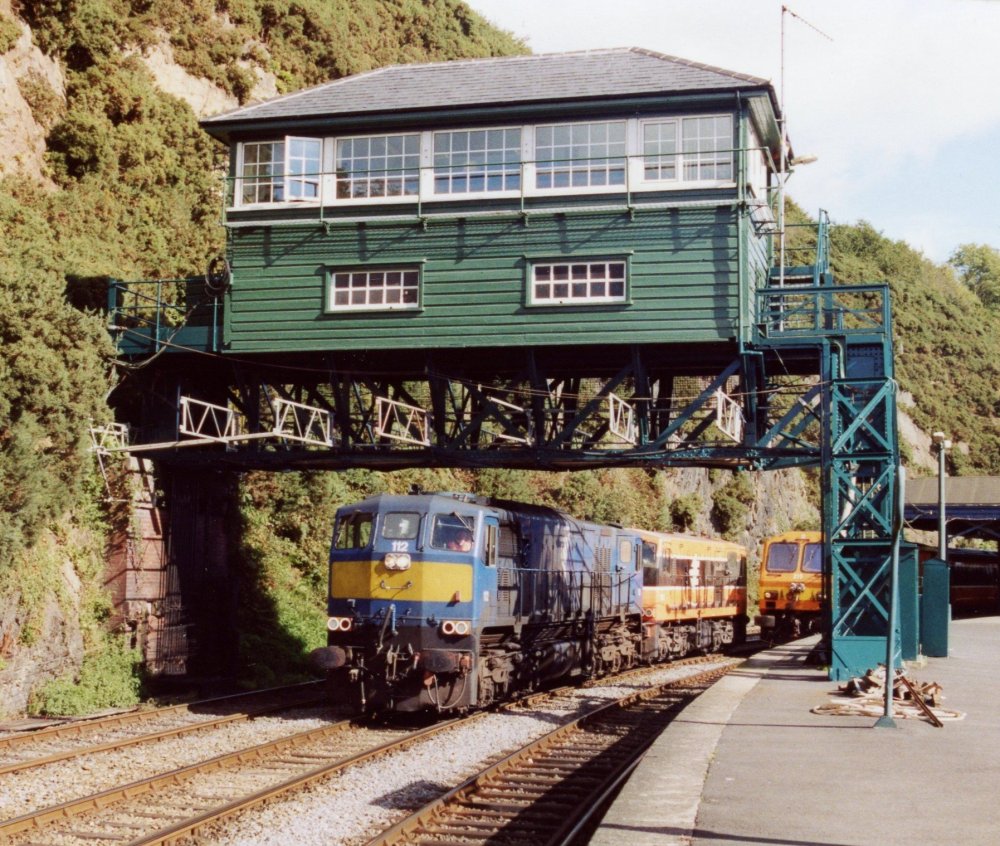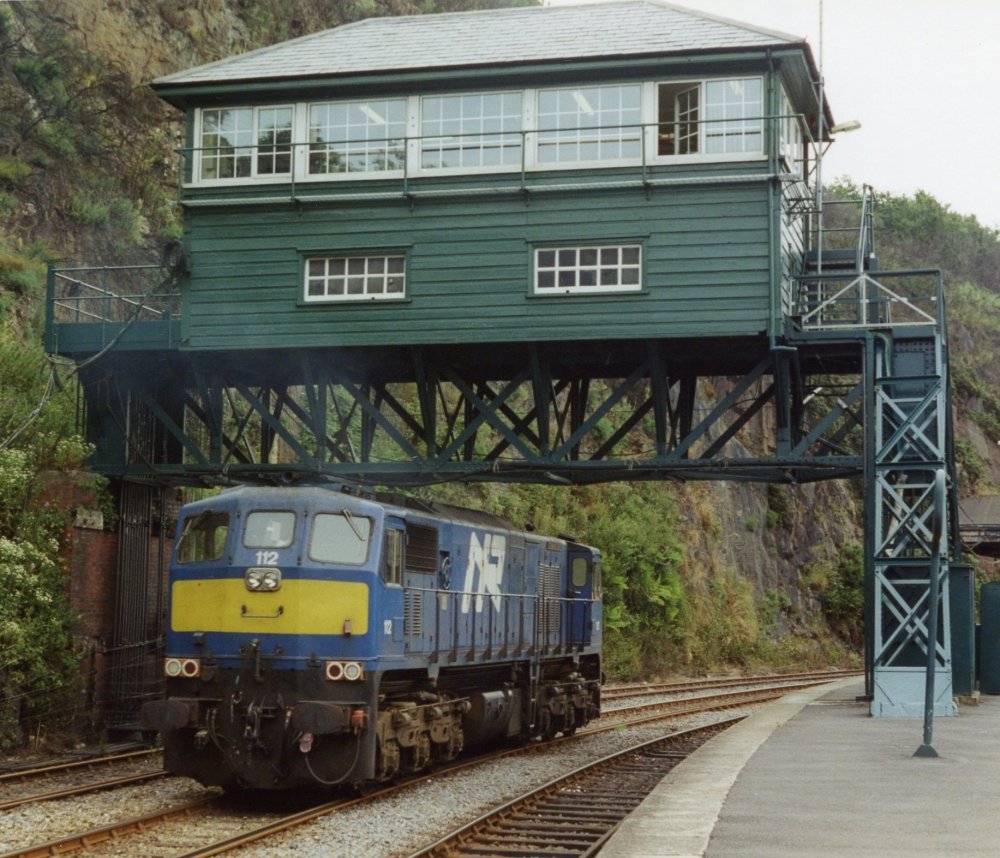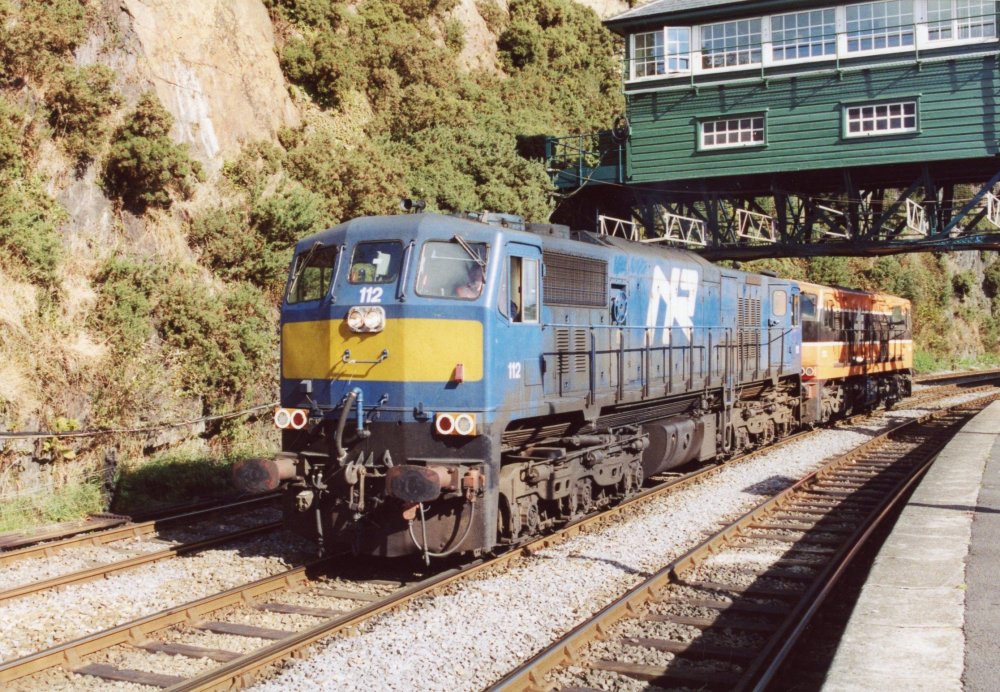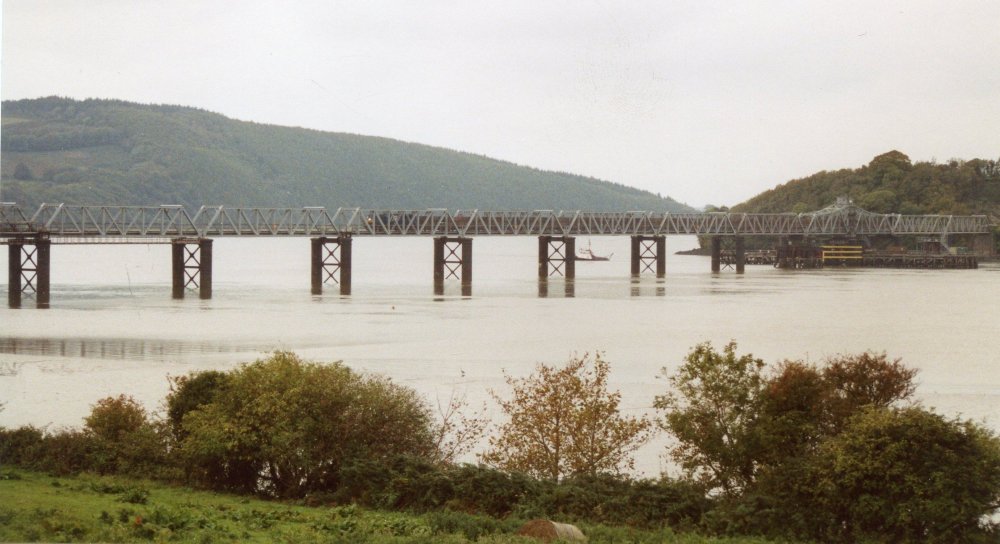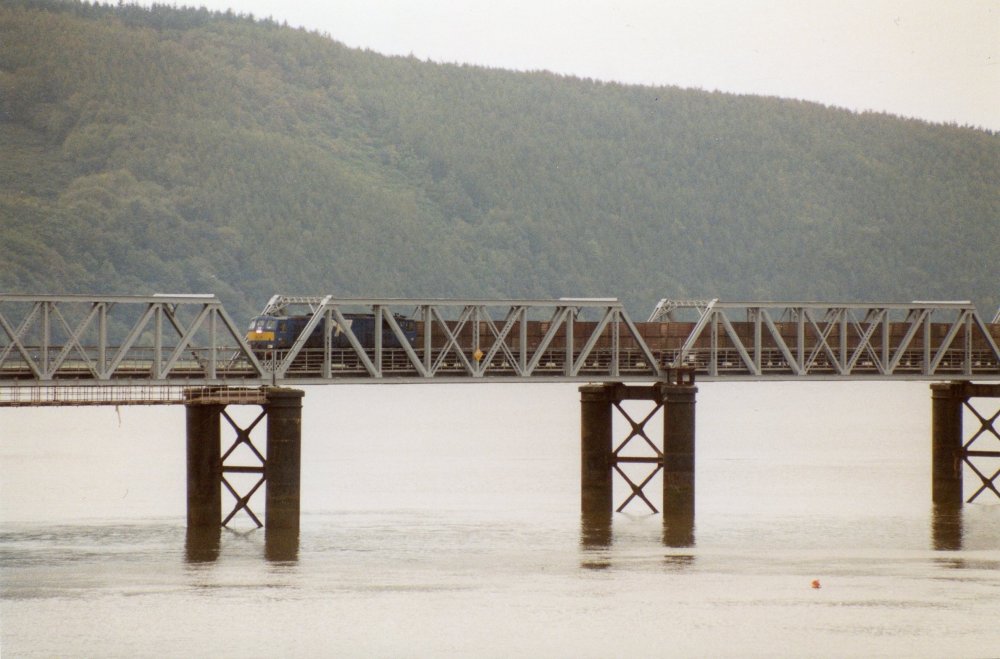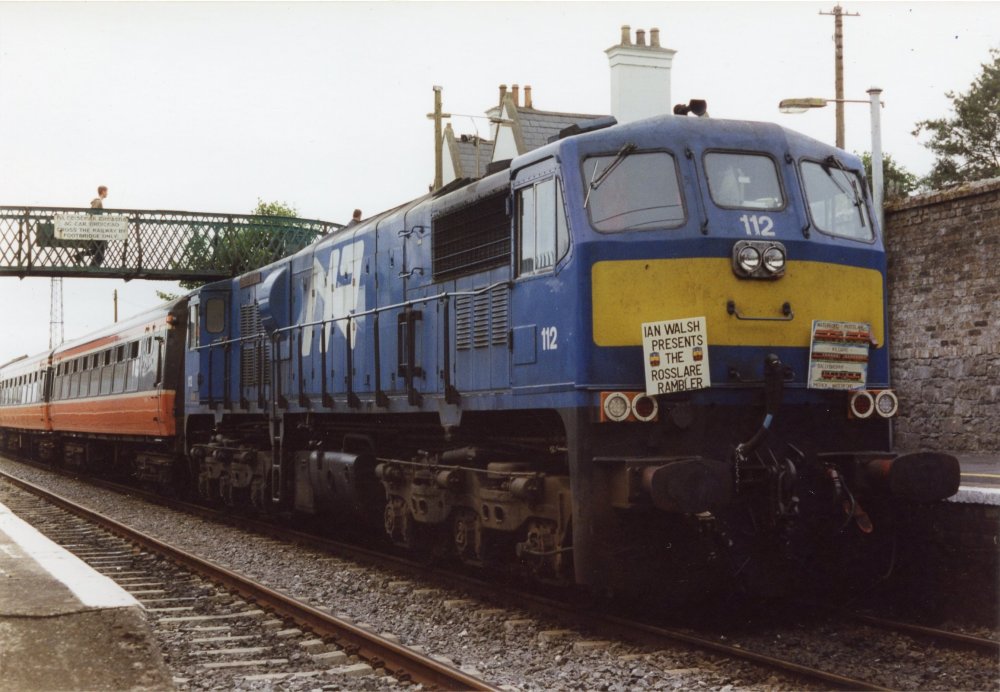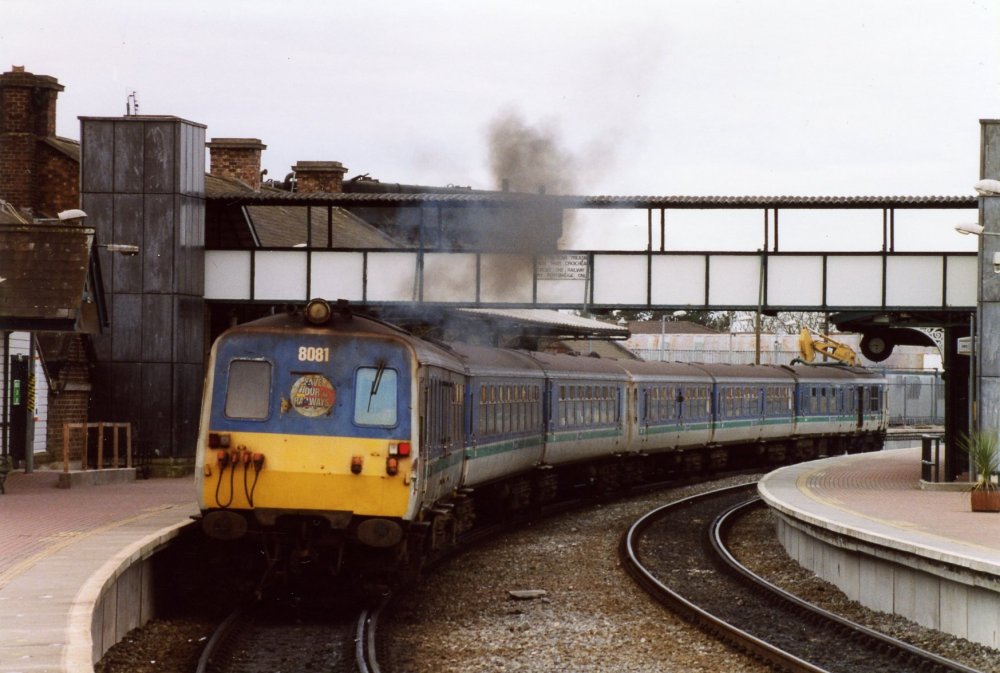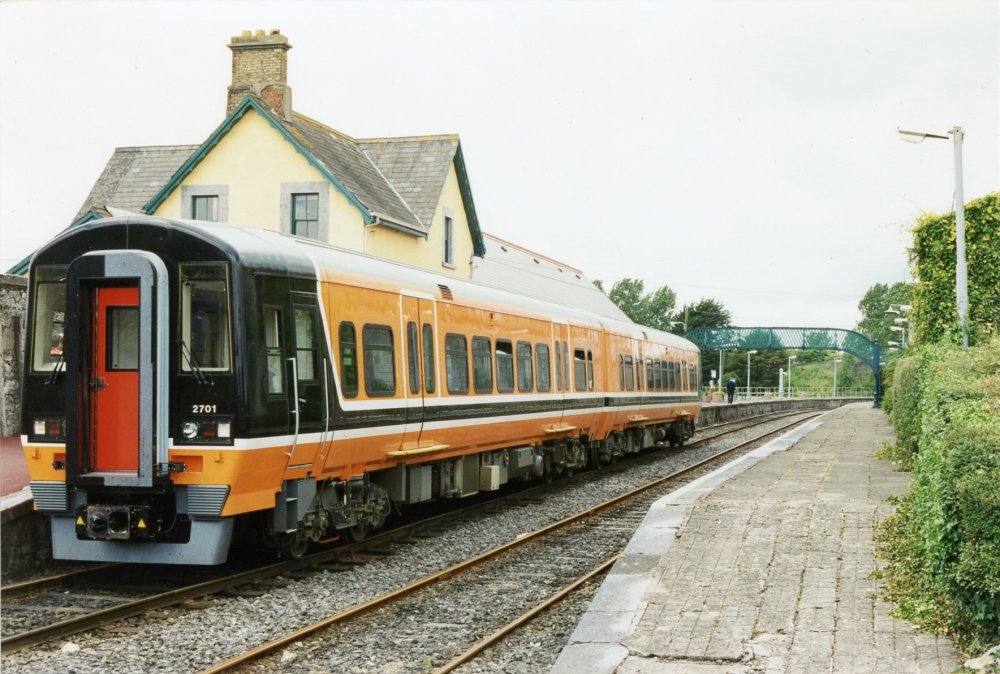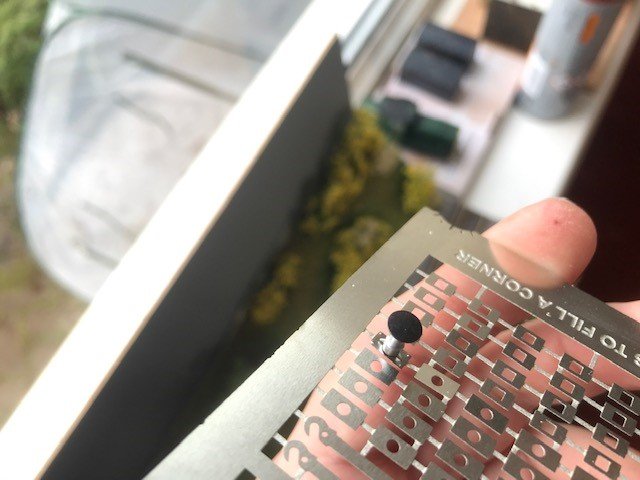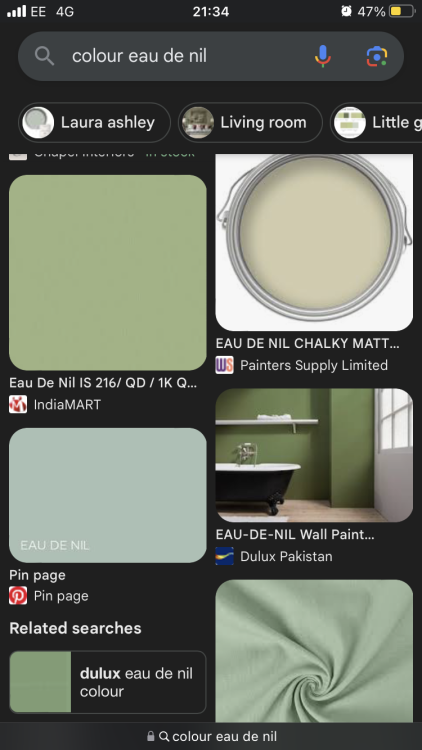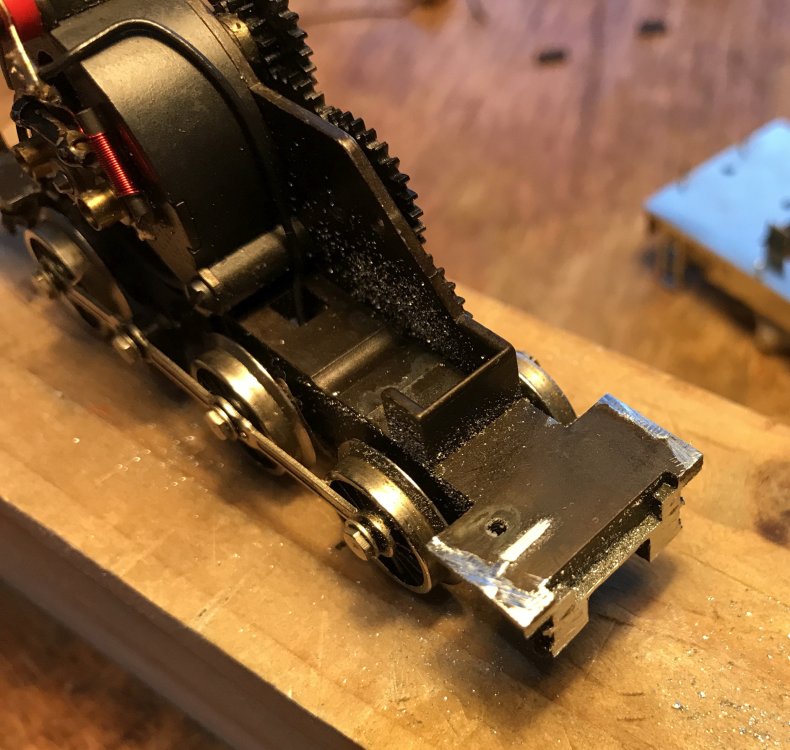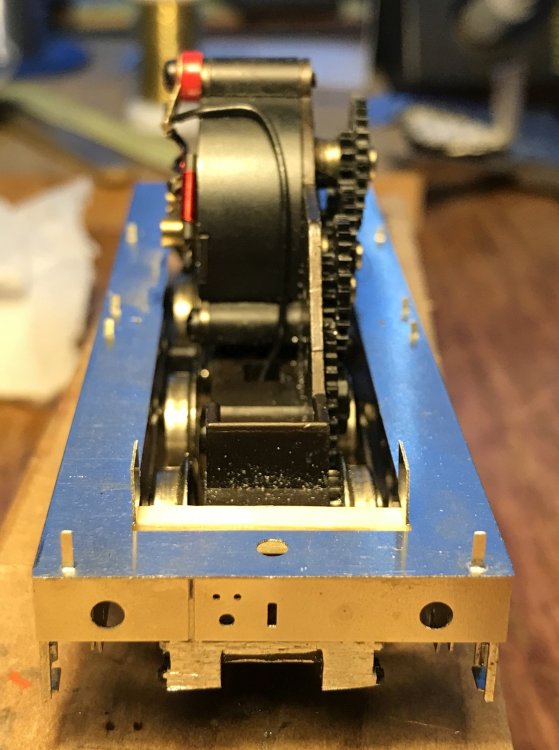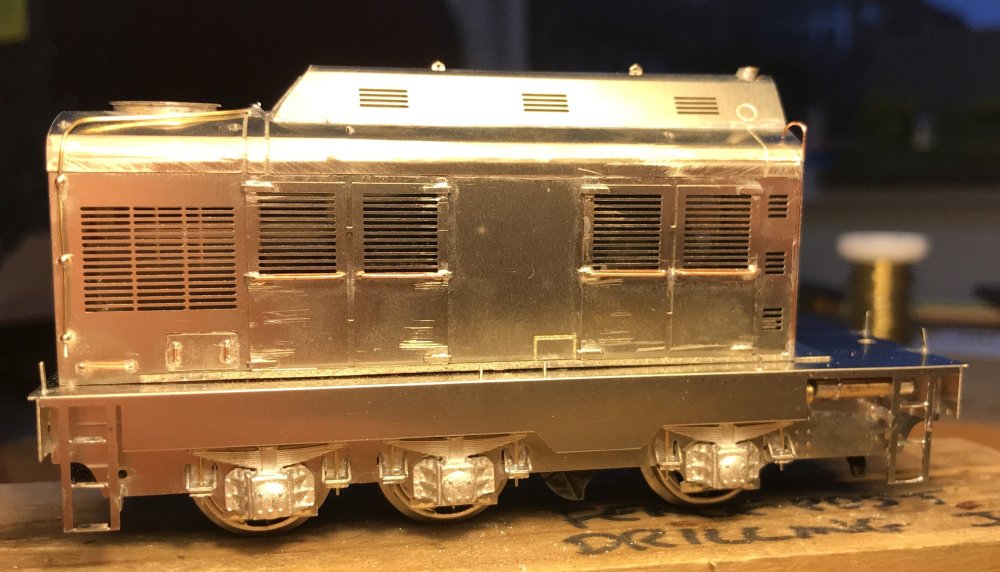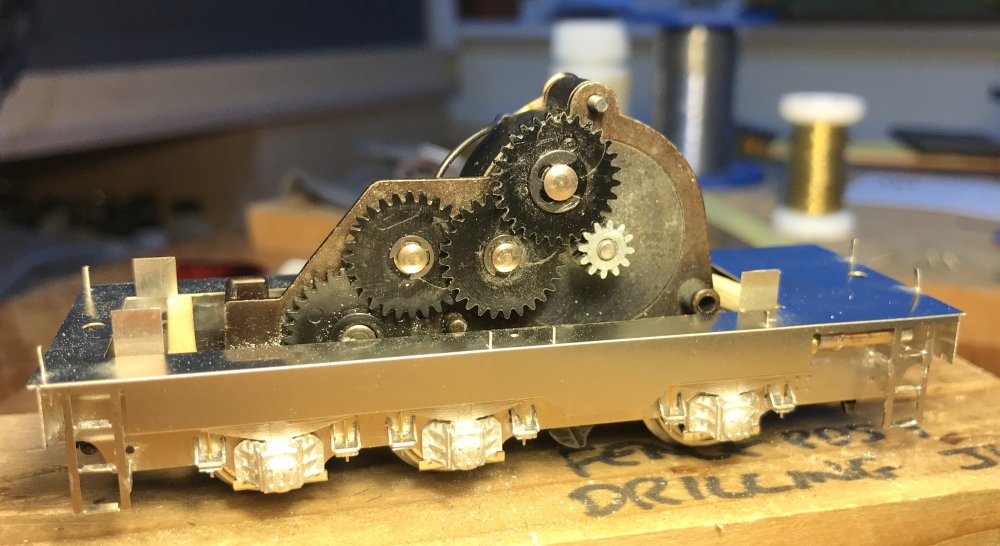
Mol_PMB
Members-
Posts
2,165 -
Joined
-
Last visited
-
Days Won
112
Content Type
Profiles
Forums
Events
Gallery
Blogs
Store
Community Map
Everything posted by Mol_PMB
-
Taking a look through my rose-tinted spectacles to scan a few of my old photos, here she is on sabbatical down south: 112 drags 153 below Waterford box, 215 just visible on the Dublin service: Same place, same loco, different occasion: On this occasion I'd rather have had an orange one! A very gloomy day as 112 heads an empty beet train across the Barrow Bridge: And finally, a passenger service; this was a very memorable railtour!
-
How it used to be when the DD failed. A six-car 80 packed full and standing powers north out of Drogheda just after I had alighted from it. Two of the trailers are former Enterprise stock.
-
The "Eyre Lee Bird" railtour Cork-Galway-Return 5th April 2025
Mol_PMB replied to Niles's topic in What's On?
Joining the dots... I've just scanned this print which was given to me by the Ennis stationmaster over 20 years ago. Apparently it was the first Arrow of any type to visit Ennis and therefore the first on the WRC. -
The "Eyre Lee Bird" railtour Cork-Galway-Return 5th April 2025
Mol_PMB replied to Niles's topic in What's On?
Excellent route - I am very tempted! 2600s wouldn't be my first choice of railtour traction but sadly the days of Cravens and baby GMs are long gone, and I suppose the 2600s won't be around much longer either. -
Hi John, I would certainly be interested in some of these, probably 2 pairs though I might have my arm twisted for 3 pairs. For info on the detail castings: Wizard Models BRC025 should be suitable for the axlebox/spring castings: Accurascale SKU ACC2013OLEO12 are sprung OLEO buffers with 16" heads, which may also be suitable. They need a base plate to mount on; I included some of these on the corner of my E401 etch artwork, but it may be worth adding them to your revised etch artwork to facilitate this option. A very quick test assembly here: IRM also offer the ISO container mounting spigots as spares from their 42' flats. Other than that, a vacuum cylinder is needed but they're easy to find and many modellers will have a few spares lurking in stock already.
-
Many thanks to the IRRS on Flickr, a super colour image of a green H van, and with a legible number too: 18803. https://www.flickr.com/photos/irishrailwayarchive/54325907653 The date is February 1962 and the traction is a blue GNR 4-4-0!
-
Making an ‘E’ – the Maybach Diesel Model Assembly thread
Mol_PMB replied to Mol_PMB's topic in Irish Models
I'm pretty sure that the silver E class weren't numbered with the same set of transfers as the silver Metrovicks. The E class have much bolder figures and the shapes of some of the figures are quite different, for example the 2 and the 9. -
Making an ‘E’ – the Maybach Diesel Model Assembly thread
Mol_PMB replied to Mol_PMB's topic in Irish Models
-
Making an ‘E’ – the Maybach Diesel Model Assembly thread
Mol_PMB replied to Mol_PMB's topic in Irish Models
Just back from the Waldorf and an excellent IRRS talk on the DNGR. Now then, ‘eau de nil’. Do we have any sort of colour code for it? RAL or whatever. Maybe it’s the context but the numbers on this look very pale: And not at all like the numbers on this which are quite a dark green: also note: no snail… (photos from Ernie) I’m pretty sure these are mid green on an E: https://flic.kr/p/2qEmw16 (IRRS photo) I’ve only found a few colour photos of silver E’s but the numbers are very much green. -
Somewhere out there is an Electrostar vehicle that I built. During my graduate training at Litchurch Lane I had a few weeks placement on the shop floor and worked my way down the production line with one of the cars. It was a PTOSL on one of the dual-voltage units - I remember wrestling with the "elephant's trunk" HT cable! And the 6' long torque wrench for bolting the ends on the vehicle - just 6 big bolts and a lot of mastic...
-
Ernies Massive Irish 1930's to 2005 Photo Archive
Mol_PMB replied to Glenderg's topic in Photos & Videos of the Prototype
Super! Thank you for the E photos! -
Making an ‘E’ – the Maybach Diesel Model Assembly thread
Mol_PMB replied to Mol_PMB's topic in Irish Models
Thos may be opening a can of worms, but what shade of green was used for the numbers on silver locos? The few colour photos of silver E’s suggest it was darker than eau-de-nil, presumably either the light or the dark green. I appreciate that the numbers often faded or even peeled off on some classes, but they seem to have been more durable on the Es. -
Making an ‘E’ – the Maybach Diesel Model Assembly thread
Mol_PMB replied to Mol_PMB's topic in Irish Models
Has someone at the IRRS been reading my mind? Or my thread? Newly uploaded, a wonderful photo of E410, the loco I’m modelling, in Cork, March 1959. https://flic.kr/p/2qLkHsi This shows the opposite side of the loco compared to the Fenit photo, and happily my guess on the generator access panel detail was correct. Thank you! -
Rolling stock of this era can be a real challenge to keep going, owing to obsolescence of electronics and the increasing complexity of systems compared to older stock. If you can no longer get the correct 30-year-old circuit board or chip, then there is a huge effort of reverse-engineering, redesigning with modern components, and proving that the new design is equivalent to the old. Pre-1990s technology is much easier to fix.
-
Making an ‘E’ – the Maybach Diesel Model Assembly thread
Mol_PMB replied to Mol_PMB's topic in Irish Models
I bought a fairly cheap (£40) Fleischmann V60 chassis to see if it would be suitable as an RTR donor for the E401. I think the answer is yes. I can't imagine that there's any more suitable donor loco class out there. I used a junior hacksaw to cut one end off the chassis casting: With some minor fettling, the chassis would then fit into the E401 footplate. To align the axle and axlebox I added about 3mm packing at each end; this would give space for a proper mounting bracket each end in due course. The only thing stopping the bonnet fitting over it was the red plastic terminal on the top of the motor. However, I was able to replace that with a couple of smaller M2 insulating washers and that was enough to let the bonnet fit down snugly: You can also see in this photo that the wheelbase is a very good match. The E401 is 20mm + 32mm, while the V60 is 20.5mm + 32mm. So that's the good points. Slight disadvantages are that the version I bought has rather coarse wheel flanges, it would be fine on code 100 rail but not on code 75. Also the electrics seem to use the chassis block as one side of the circuit, which may make a DCC conversion more tricky. I haven't investigated that yet. And finally, there's the question of the rods. They fit between the E401's outer frames so could be left in place, but I think they might just be visible as the wheels go round, which could look odd. Alternatively they could be removed, leaving the geared drive onto 2 of the 3 axles. Personally, I'm not going to use this chassis option, because I'm going to build a 21mm gauge chassis with suspension and finescale wheels. But the V60 chassis option does look like it will work and I can design some mounting brackets for it. It's likely that more modern V60 models have better wheel profiles, but there was a limit to how much I was willing to spend on something that's a significant diversion from my own project. I've got another couple of busy work days coming up, but hopefully at the weekend I'll get the etch construction completed and the chassis design progressed too.- 200 replies
-
- 11
-

-

-
Making an ‘E’ – the Maybach Diesel Model Assembly thread
Mol_PMB replied to Mol_PMB's topic in Irish Models
Thanks for the tip, I found your thread here but couldn't spot the E: Anyway, I looked through the archive itself which has a lot of wonderful photos of the quays and ships of Cork, and some railway photos like this one: https://publications.corkarchives.ie/view/368357679/334-335/ This image shows one of the elusive LMA vans on the far right: https://publications.corkarchives.ie/view/368357679/678/ -
"Voiding the Warranty" - Mol's experiments in 21mm gauge
Mol_PMB replied to Mol_PMB's topic in Irish Models
Thanks Arran, that's very useful information! I'm sure you're right for the later containers like the ones you have produced. I think some of the earlier ones might have been a different shade though. It's often difficult to judge from old photos, and as you can see from my transfers I was undecided too. Because these custom transfers are printed using the old ALPS process I had a limited choice of colours. For the 'blue stripe' livery I was mainly using Jonathan Allen's photo as a basis, and this looks like a paler blue with a slightly greenish tint: This image from Wrenneire from the freight containers thread also hints at a paler, slghtly greener colour on the vertical panel, while the 'red stripe' box on the right has a different shade more like the RAL5002 on the FREIGHTWAY lettering: This post from Wrenneire also shows some nice colour views of the early ones: Applying the transfers over the container ribs has been a challenge in places! I had to design the transfer artwork with extra length to account for the wriggles, and it was difficult to get them to seat over all the ribs snugly. But I think I've achieved a satisfactory result and hopefully a bit of weathering will conceal any imperfections. -
Making an ‘E’ – the Maybach Diesel Model Assembly thread
Mol_PMB replied to Mol_PMB's topic in Irish Models
Agreed, E428 was allocated to Limerick from 1962 to 1974, possibly substituted by another of the class from time to time. I've seen several photos of E428 in Limerick. Incidentally here's two shunters together at Limerick: https://www.flickr.com/photos/irishrailwayarchive/53445965287 Also, two E421s went to Cork around 1962: E422 and E429. E429 was based there until 1974. I've seen photos of both of those in Cork. I think it was E421s that worked at Shelton Abbey, though I haven't seen any photos. However, for this thread, it's the E401s I'm more interested in. It seems that several of them were used in the Cork/Kerry area in the 1958-1962 period. E414 appears in several photos from that period, including this one from Ernie: We can also add E403 to the list, here it is shunting at Rocksavage in a photo in the NLI archive: https://catalogue.nli.ie/Record/vtls000304718 -
Good luck!
-
Building an etched kit with no instructions is all part of the fun! Certainly needs a thorough knowledge of the prototype and some familiarity with the designer’s mindset - a bit like solving a cryptic crossword. I’ve found that writing comprehensive instructions during the test build process does take a few hours but it’s not too much of a chore, but then so far no-one else has tried to interpret them.
-
Thanks, this is really useful to get an idea of what the etches comprise. I don’t feel so guilty about forgetting the windscreen wipers on my E401 etch now! At least they’re readily available elsewhere. Cheers Mol
-
All Superb! The NCC railcar is especially nice!
-
Making an ‘E’ – the Maybach Diesel Model Assembly thread
Mol_PMB replied to Mol_PMB's topic in Irish Models
If you do have any photos of the E401s outside Dublin, or can point me towards where they are published, I’d be very interested. I’ve seen 4 pics of E414 in Cork, and one of E410 at Fenit. And E407 I think at Newbridge. All are referenced in my photo list spreadsheet upthread. Otherwise they’re all in Dublin area. Cheers, Mol -
There’s some spare locos and rolling stock in the North. A blue GM (or indeed a GN 4-4-0) and a rake of RPSI stock would be just the thing for Limerick-Galway services. I expect a WT would put in a good performance on the Youghals with a short train.
-
Making an ‘E’ – the Maybach Diesel Model Assembly thread
Mol_PMB replied to Mol_PMB's topic in Irish Models
That’s interesting. I had seen a reference to E404 in Cork but not seen any photos. If E411 was down there as well then there were at least 4 different locos in the south west in the silver era. Probably not all at the same time, but it does indicate they got about a bit more than people might expect.
.png.c363cdf5c3fb7955cd92a55eb6dbbae0.png)
